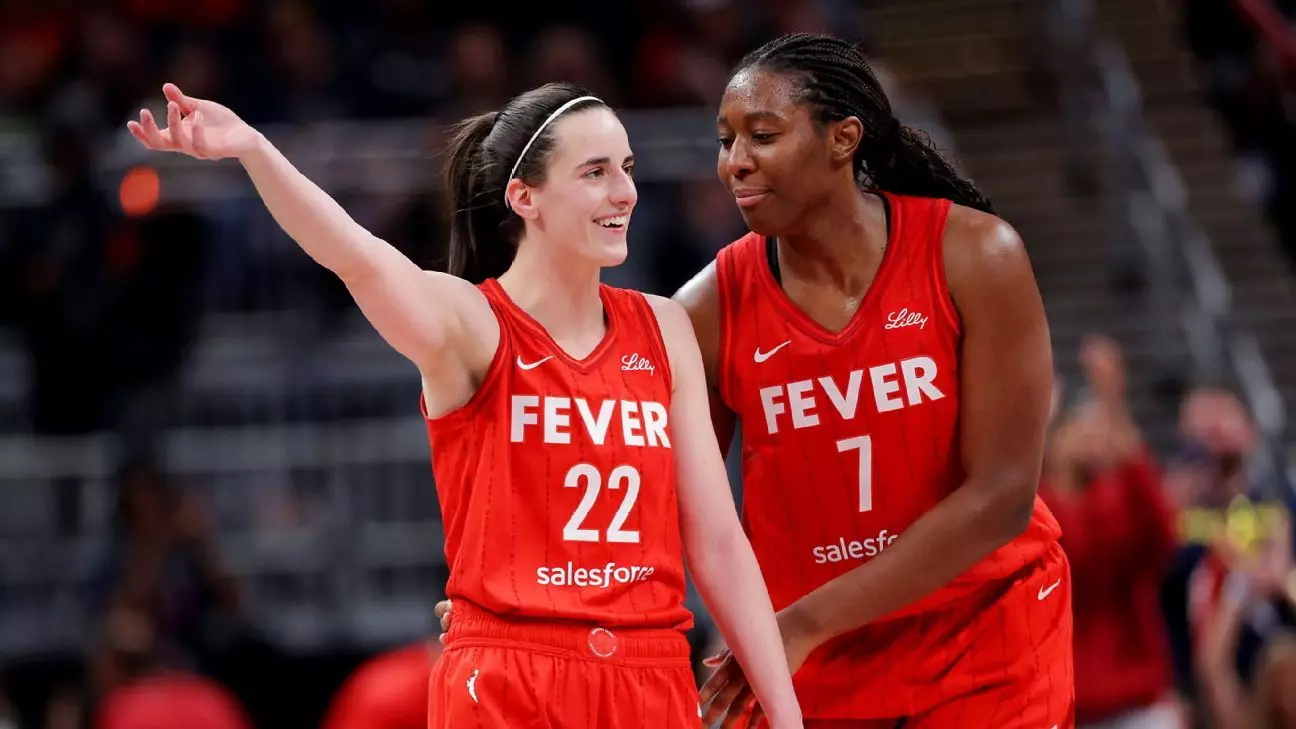The upcoming WNBA All-Star Game in Indianapolis might seem like a jubilant showcase of the league’s brightest talents, but beneath the surface, it exposes a troubling narrative about the state of women’s basketball. While the league celebrates its stars—particularly the Indiana Fever’s trio of All-Stars—it inadvertently masks systemic issues like franchise instability, uneven development, and the superficiality of star power-driven events. The decision to gather these standout players in one city offers a fleeting moment of unity, but it ultimately highlights how far the league still must go to foster authentic, sustainable growth.
The event itself, a heavily orchestrated spectacle featuring drafted teams and fan votes, may look appealing on paper but fails to address deeper concerns. For fans craving genuine competitive integrity and meaningful progress, this All-Star celebration epitomizes style over substance. It’s an elaborate distraction that emphasizes individual achievements at the expense of promoting the league’s collective advancement.
Team Selections: Star Power Over Substance
The drafting process, driven by captains Caitlin Clark and Napheesa Collier, is a flashy spectacle designed to drum up excitement. Yet, it reveals a concerning prioritization of individual popularity rather than strategic team-building or league-wide talent development. Clark and Collier’s choices, primarily based on fan votes and star appeal, underscore a league obsessed with marquee names and social media hype.
What’s troubling is the lack of emphasis on players who represent the league’s future or those battling systemic barriers. This focus on established stars like Sabrina Ionescu, A’ja Wilson, and Breanna Stewart, while deserving, sidesteps the urgent need to elevate grassroots talent and understaffed teams. The selection process feels more like a popularity contest than a strategic effort to showcase the league’s depth.
Moreover, the trades and coach switch-ups—such as swapping Cheryl Reeve and Sandy Brondello—are more about political maneuvering than genuine team-building. These decisions reinforce a narrative where behind-the-scenes negotiations overshadow on-court performance or player development. The league’s narrative has become a spectacle of manufactured drama rather than a reflection of athletic progress and strategic growth.
A Flawed Portrayal of Competition and Progress
The All-Star Game and associated skills events—like three-point contests—are presented as celebrations of skill, but they lack the authenticity needed to push the league forward. Instead of fostering deeper competition and acknowledging systemic disparities, these events reinforce superficial rivalries and highlight league contradictions.
The league’s reliance on fan voting and spectacle reduces the game to entertainment rather than a platform for advocating better working conditions, equitable pay, or expanded opportunities for all players. By prioritizing flashy events over structural reforms, the league undercuts its potential to drive meaningful change.
Furthermore, staging all these festivities in one city—home of the Fever—shifts attention away from the league’s broader challenges. While local fans enjoy the spectacle, the league as a whole remains plagued by organizational instability, uneven market growth, and a lack of clarity around its long-term vision. Celebrating a fleeting moment of unity does nothing to address these core issues.
A Call for Authentic Leadership and Genuine Growth
As much as the league champions its stars and their athletic feats, it must confront its own contradictions. Celebrating individual brilliance without addressing systemic flaws only deepens the league’s identity crisis. Authentic progress requires leaders willing to prioritize developmental opportunities for marginalized players, invest in underserved markets, and move beyond superficial star power.
The All-Star festivities could serve as a catalyst for reevaluating priorities—shifting focus from spectacle to sustainability. The league needs to foster a culture that values team-building, long-term player development, and equitable investment. Without this shift, the league risks remaining an entertainment side-show—glorifying its stars without building a truly competitive, inclusive future.
Finally, this event underscores the urgent need for a comprehensive overhaul of how women’s basketball is marketed and promoted. The league’s star-driven approach is effective for short-term engagement but fails in cultivating a resilient, diverse, and inclusive basketball ecosystem. Recognizing the limitations of superficial celebration, the league must embrace genuine leadership that champions sustainable growth over fleeting moments of fame.



Leave a Reply